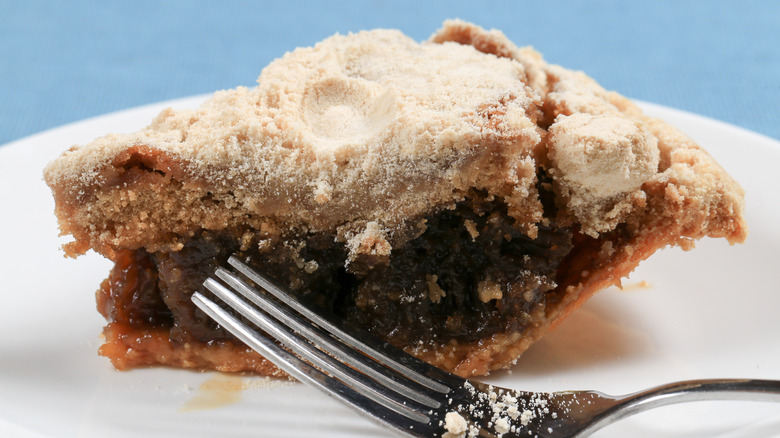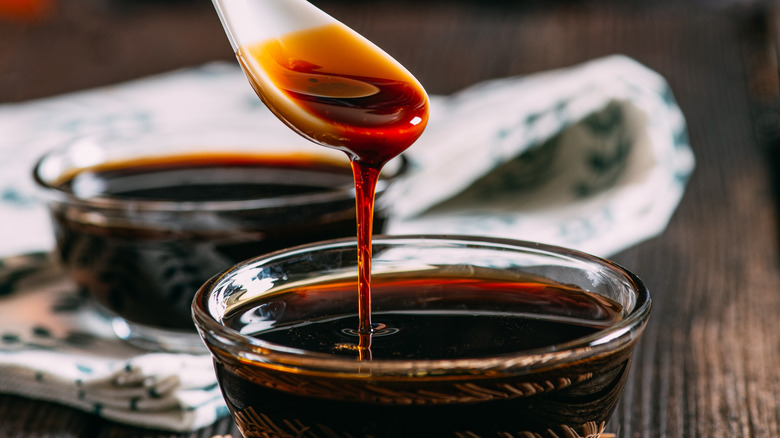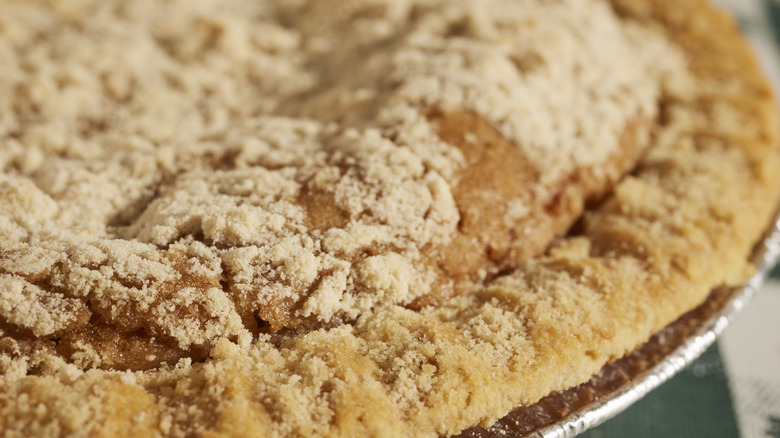Wet Vs Dry Bottom Pie: What's The Difference?
If you've ever been to the state of Pennsylvania, you may have come across shoofly pie. It may have an unusual name, but this traditional Pennsylvania Dutch (Amish) molasses-based dessert is a must-try.
Shoofly pie comes in two varieties: wet bottom and dry bottom. The two versions are made with the same ingredients, but the way that they are combined makes the difference in this rich dessert.
The molasses is the star of the show, as shoofly pie is characterized by its intense sweetness and rich and earthy flavor. This is balanced by caramel notes of brown sugar, complemented by a hint of spices such as cinnamon, ginger, or cloves, rounded out by buttery pastry and a crumbly topping. Dry bottom pie recipes typically use more flour and sugar to make a larger quantity of streusel crumbs, while wet bottom pies usually call for more molasses. That being said, the difference between the two is chiefly in the assembly method. Regardless of whether you prefer wet or dry bottom pie, both hit the sweet spot.
Wet bottom pie, a Lancaster County favorite
Although most bakers want to avoid a soggy bottom, which typically happens when the pastry has been undercooked, the wet bottom of shoofly pie is made from a gooey layer of molasses syrup or custard layered over the pastry base.
Molasses, brown sugar, flour, baking soda, and spices are combined to make a sticky pie filling. For the wet bottom, hot water is often added to help dissolve the molasses and brown sugar into a thick, gooey syrup. The molasses syrup is poured over the unbaked pastry, seeping in and resulting in a barely-there pie crust and a deep layer of sticky molasses filling. This is finished with a buttery, streusel-style crumb topping for a contrasting texture, leaving you with a decadently sweet and gooey dessert.
Wet bottom shoofly pie is mainly found in the Lancaster County region of Pennsylvania. Across the rest of the state, pie connoisseurs are divided over the wet bottom vs. dry bottom debate.
Dry bottom pie, the Amish original
Dry bottom shoofly pie is made with the same ingredients, but they are combined differently to create a firmer texture and keep the bottom layer of pastry crisp. Most of the crumbly streusel is mixed into the molasses filling before it is poured over the pie crust, with the remaining crumbs scattered over the top. This soaks up some of the molasses syrup, resulting in a more cake-like texture when baked. It may still have a gooier consistency near the bottom, but the added crumbs mean the molasses layer doesn't saturate the pastry, resulting in a dry bottom. It may also be baked for longer, giving more time for the filling to set.
Dry bottom pie is thought to be the original version of Shoofly pie, as it was traditionally eaten at breakfast rather than as a dessert. Baking a crumb cake inside a pastry crust made it easier for people to dunk it into a cup of coffee and enjoy a hit of sugar to give them energy for the day.


